The link between The Exorcist, Amateur Radio and Alan Turing.
A quick look at how the movie The Exorcist from 1973 has links to the late great Alan Turing via Mike Oldfield’s album Tubular Bells, Scotland and Amateur Radio. It’s Halloween so figured why not throw some horror in the mix.
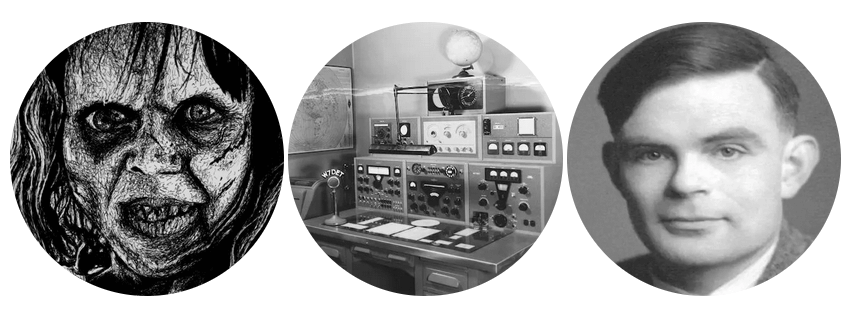
When Mike Oldfield recorded Tubular Bells in 1973 he had no idea his first album on Virgin Records would be chosen as the soundtrack to The Exorcist later that year. Neither did he know that recording with Virgin Records would have an unintended consequence of hiding a secret message which dates back to 1926, shortly after World War One.
Tubular Bells was famously recorded at The Manor Studio which was owned by Richard Branson and used as a recording studio for Virgin Records. The building is located in Shipton-on-Cherwell, England. Mike was given one week to record the album, on which he played almost all the instruments himself.
The album initially struggled to sell. Then, later the same year, it was chosen as the soundtrack for the movie The Exorcist. It then experienced massive success and has since sold over 15 million copies worldwide.
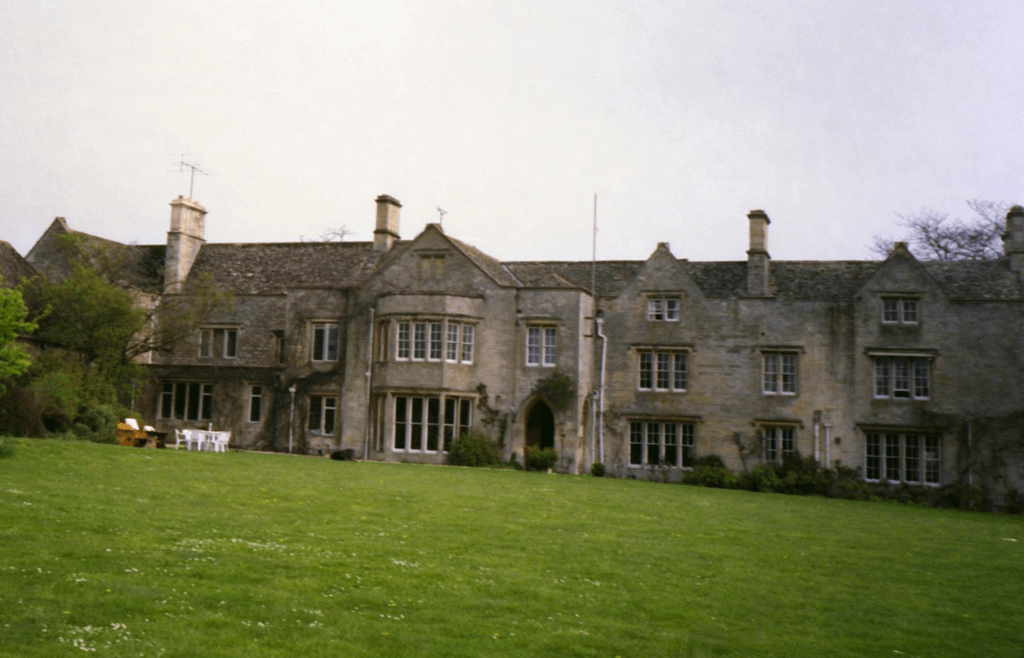
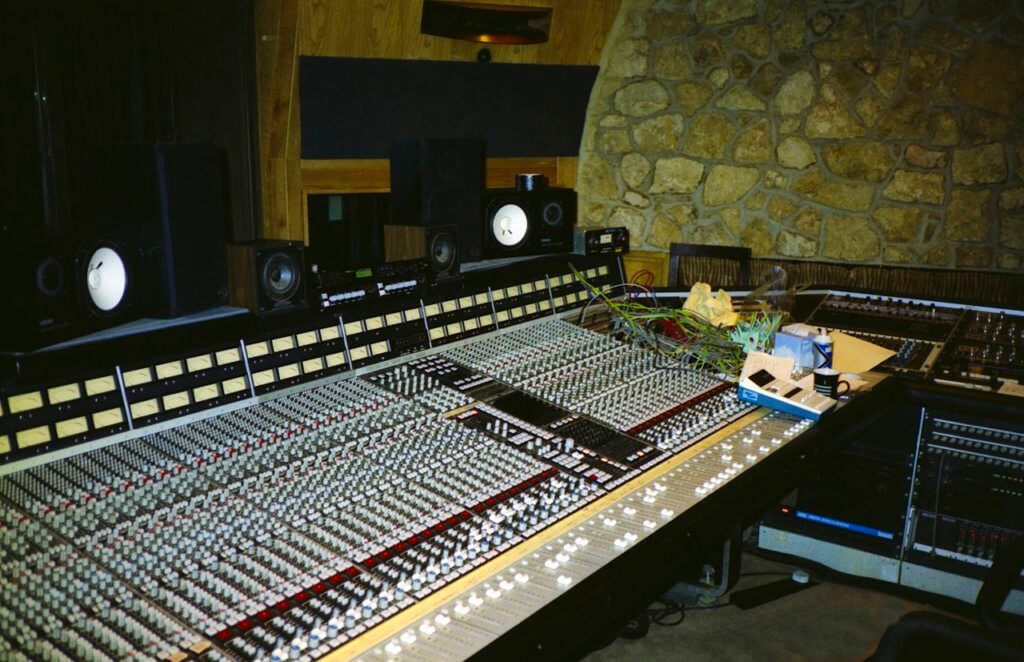
It was in this very studio, completely unknown to the engineers at the time, they would inadvertently capture a radio signal from a nearby transmitter and store it forever on the Tubular Bells album.
Around 37 miles north of the studio near Rugby, in a small suburb called Hillmorton, a very large radio transmitter had been built after the end of World War One to link Great Britain with other parts of the British Empire. It was originally used to transmit telegraph messages to the Commonwealth as part of the Imperial Wireless Chain. After the 1950s this transmitter was used for transmitting messages to submerged submarines and so operated on Very Low Frequencies (VLF). In 1927 a second transmitter was added in order to create the first transatlantic commercial telephone service between England and the USA.
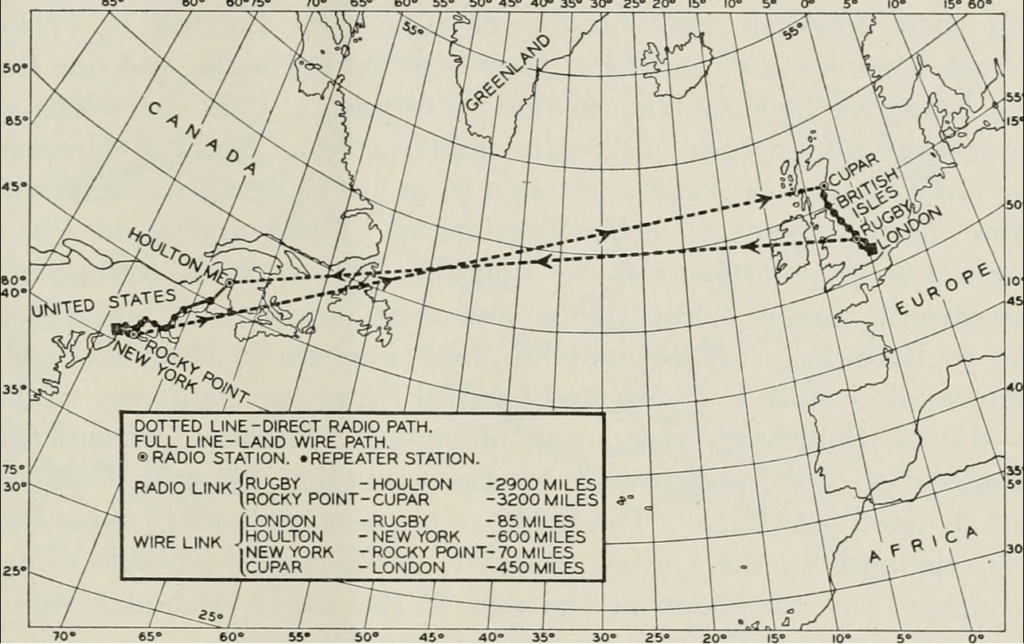
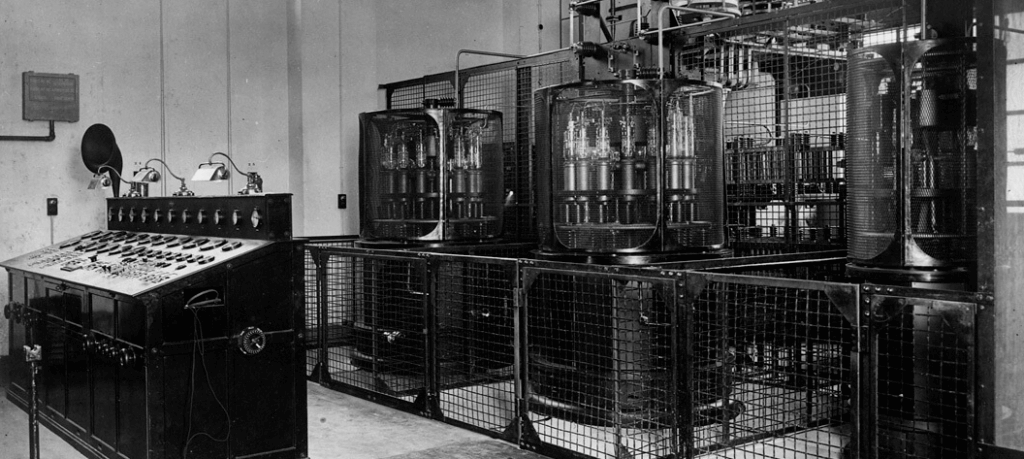
The first transmitter at Rugby operated at very high power on 16 KHz, which as far as the radio spectrum goes is extremetly low frequency. So low in fact that it falls within the 20 Hz – 20 KHz range of human hearing. Now, let’s be very clear here – electromagnetic radio waves and sound pressure waves are entirely different. The human ear cannot detect electromagnetic waves at any frequency, however, electronics intended for audio can also detect radio waves as all they are sensitive to is voltage and don’t care what created the voltage.
In the case of a microphone (audio) that is the electrical energy generated by the moving diaphragm which is sent down the cable. In the case of an antenna (electromagnetic wave) the radio signal’s electrical component induces a voltage in the conductor. In both scenarios the electronic equipment at the end of the wire just sees a voltage. So long as it is sensitive at the frequency of the signal it makes no difference where said signal originated.
I’m quite sure the technically astute amougst you will see where this is going. First, let’s take a look at where there two places are on the map.
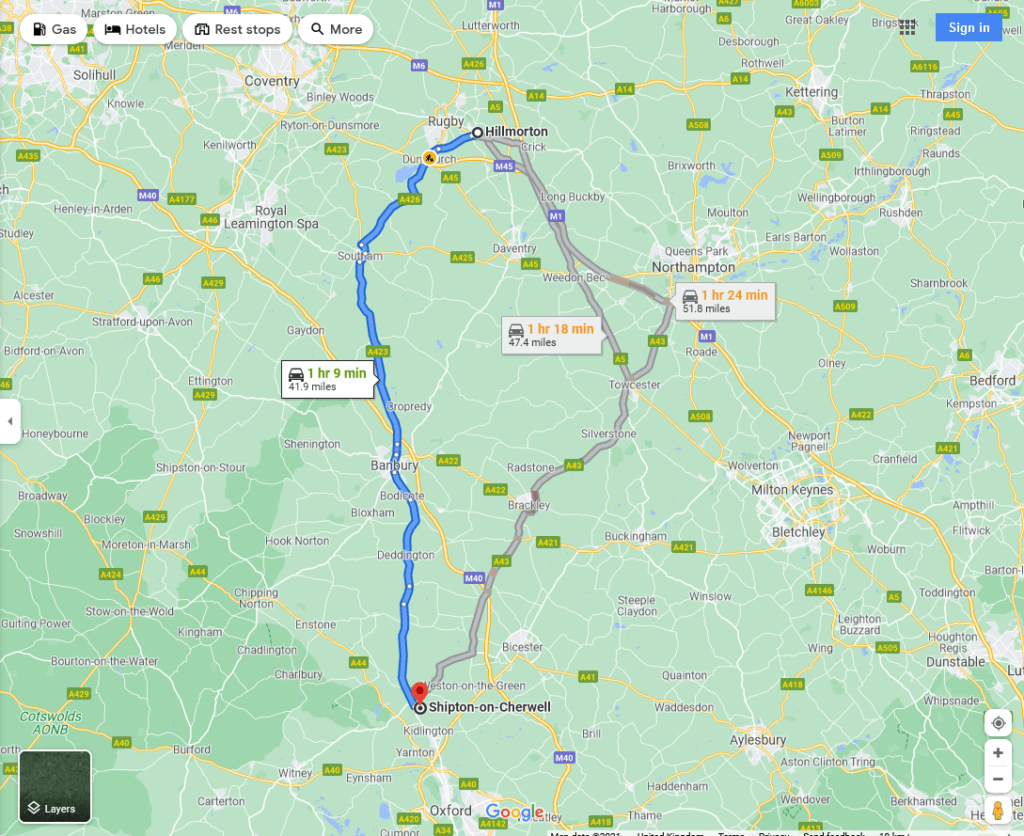
As the crow flies these two locations are 37 miles from each other. That might sound quite far but let’s take a look at the scale of the transmitting station we’re talking about.
I couldn’t find details on the power output of this station (in fact it was made up of 57 transmitters in total) but based on a similar transmitter (Anthorn Radio Station) it is safe to assume the 16 KHz transmitter would have been tens if not hundreds of killowatts. Given how narrow bandwidth the CW signals were, compared to say something like TV, that amount of power is very considerable indeed.
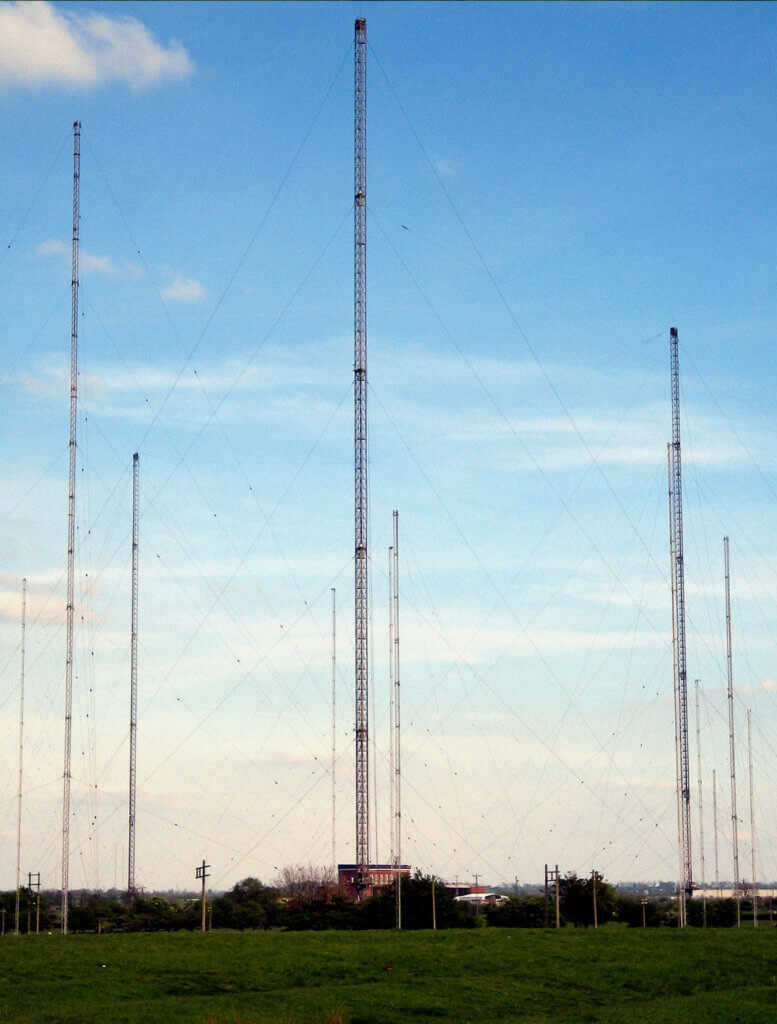
That’s enough background, now let’s take a look at what happened.
The Rugby Radio station transmitter would constantly announce its ID (callsign) via Morse Code. This would have been an automated process which ran 24/7 unless a particular message needed to be to be sent, in which case the constant ID transmission would temporarily pause and the message would be sent instead.
Because of the relative close proximity of the Manor Studio to this massive transmitter and the fact it was transmitting within the frequency range of an audio recording, the signal was picked up by some piece of equipment in the studio. As mentioned, although the human ear cannot detect electromagnetic waves, electronic equipment – even those intended for audio – most certainly can. This is akin to placing your mobile phone near a speaker and hearing the random beeps of interference it can cause. The video at the foot of this page demonstrates how one can use a standard computer audio interface to recieve VLF radio signals. Something in the studio was sensitive enough to record the morse code being transmitted and it is forever stored on the Tubular Bells album. Nobody knows exactly what picked it up – possibly a microphone or guitar pickup – though given how regular it appears througout the album it’s quite possible it was a mixer or the recording equipment itself, probably via unshielded cables acting as antennas.
This was originally discoverd by a chap from Austria named Gerhard Kircher. He was testing a spectrum analyzer and noticed a strange signature at 16 KHz. We can take a look a look at this using the spectrogram feature of Audacity.

You should be able to see a faint horizonal line at exactly 16 KHz which runs across the entire track. This is of course the ‘unknown signal’ which clearly looks out of place.
I used a lossless FLAC copy of the CD album from 2003 to see this. It’s quite possible a lot of this would be missing from lossy copies, such as MP3s, though I haven’t tested that.
In order to actually hear this signal we need to run it through other software to center the frequency, demodulate and apply a narrow band filter. By setting the center frequency to that of the transmitter (16 KHz) we will be able to demodulate the CW carrier. To do this I used SDR# (prounounced sharp). If we load the file into this software we can clearly see the Morse Code signal.
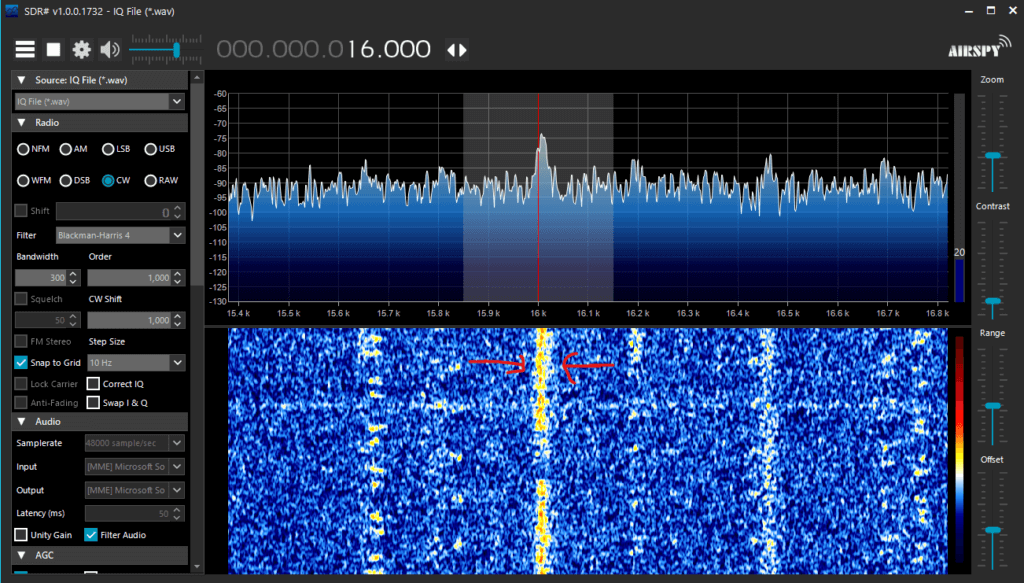
What we have here is the wave file loaded and two important settings chosen. First set the center frequency to exactly 16.0 KHz and second set the modulation to CW (essentially single side band) with a bandwidth of 300 Hz. If you adjust the frequency you’ll hear the tone of the morse beeps go up and down.
The yellow line, which has clear gaps in it, is the Morse Code being transmitted by the Rugby Radio Station. The first question you might be thinking is – but how do you know?
Here is a recording of the output from SDR# (direct link to file)
Although amateur radio is a hobby of mine I don’t know morse code off by heart. Sure, I could just look it up but thankfully there’s software which can help us. Let’s run this output, using a virtual audio cable from SDR#, through FLDigi and see if it can decode the signal.
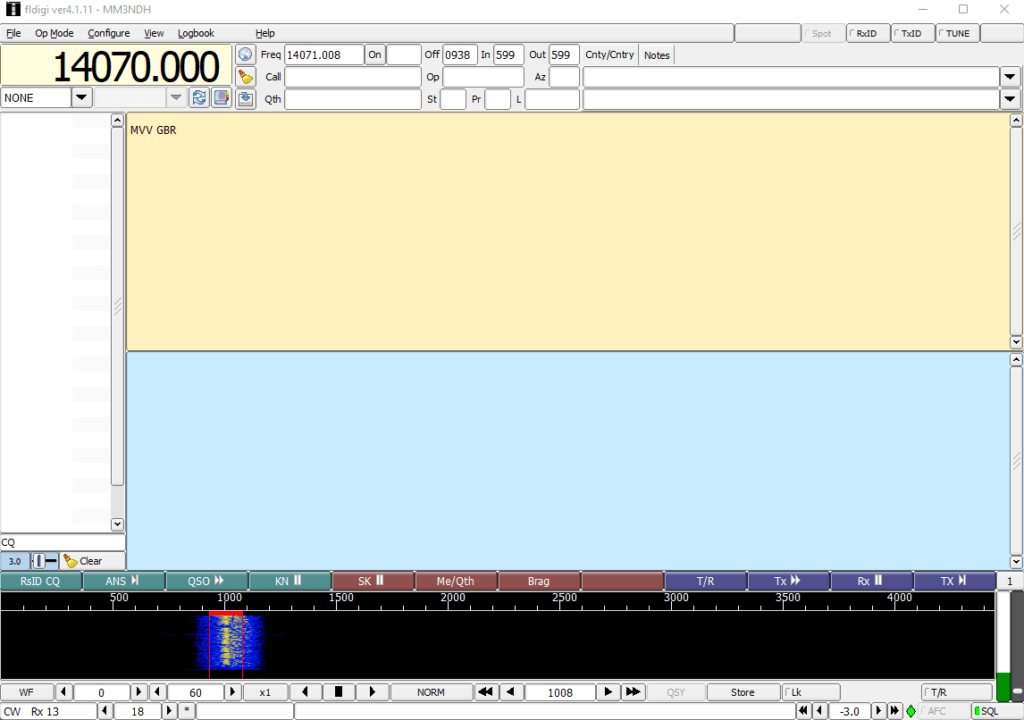
Interesting – it’s decoded ‘MVV GBR’ at around 1 KHz. Now let’s see what Rugby Radio Station’s callsign was. From the Wikipedia page:
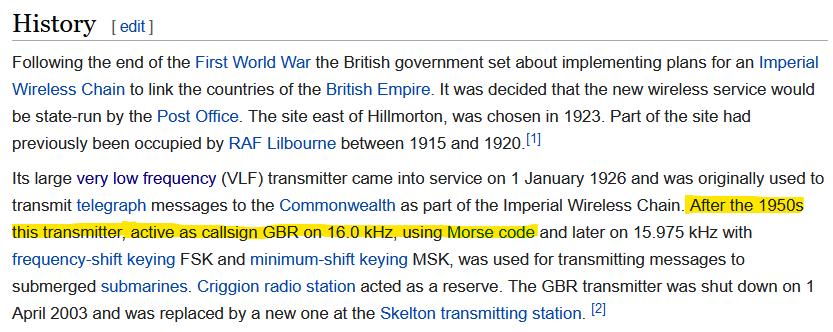
Cool! We know this station was active as ‘GBR’ at the time Tubular Bells was being recorded and it just so happens to be at the exact same frequency. I would say that is pretty damn conclusive.
The decoded morse is actually slightly wrong – rather than ‘MVV’ at the start it should be ‘VVV’ but that’s down to FLDigi not being 100% accurate. Anyone who knows morse can confirm what you actually hear is ‘VVV GBR’.
We can infer “VVV” was a generic prefix of some kind and and “GBR” was an acronym for “Great Britain Rugby”.
The GBR transmitter was shut down on 1st April 2003 and replaced with a new site known as Skelton transmitting station. The old building was turned into a school.
Depending on which piece of equipment picked up the transmission there may well be more albums which have this signal recorded on them. Here is a partial list of albums recorded at The Manor Studio. I suspect it was something specific to this album but would love to be proved wrong.
If you scroll back up and look at the old map of the Transatlanic Radio Network you will see that Rugby was one of three stations in the UK along with London and Cupar. The Cuper station was responsible for recieving the signals from Rocky Point in the states, some 3200 miles away.

The station at Cupar (Fife) in Scotland also formed part of what was known as “Y” service. This was part of an effort to both intercept and direction find enemy radio transmissions during World War One and Two, including encrypted Enigma messages, which as we all know was ultimately cracked by Alan Turing. The Cupar station was officially known as G.P.O. Transatlantic Radiophone Station Kembeck (a small village just outside Cupar). Recievers such as the The National HRO communication receiver were common in such stations.
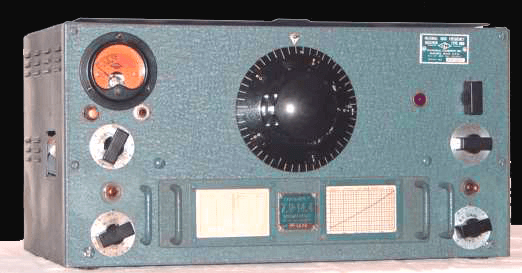
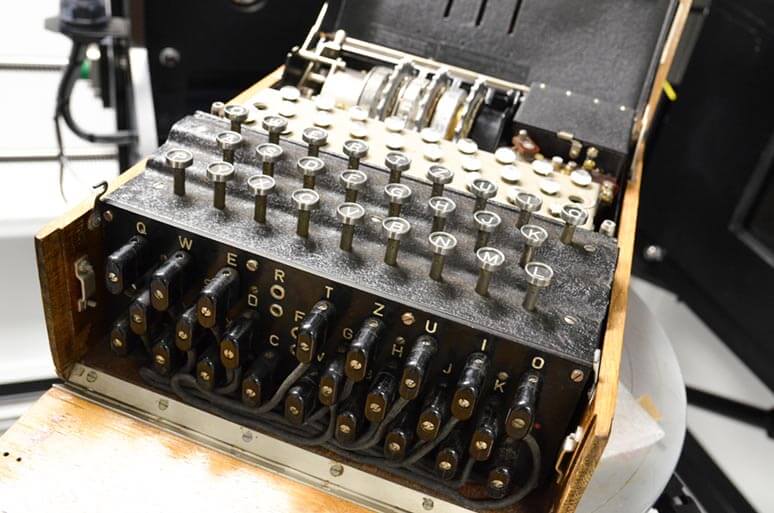
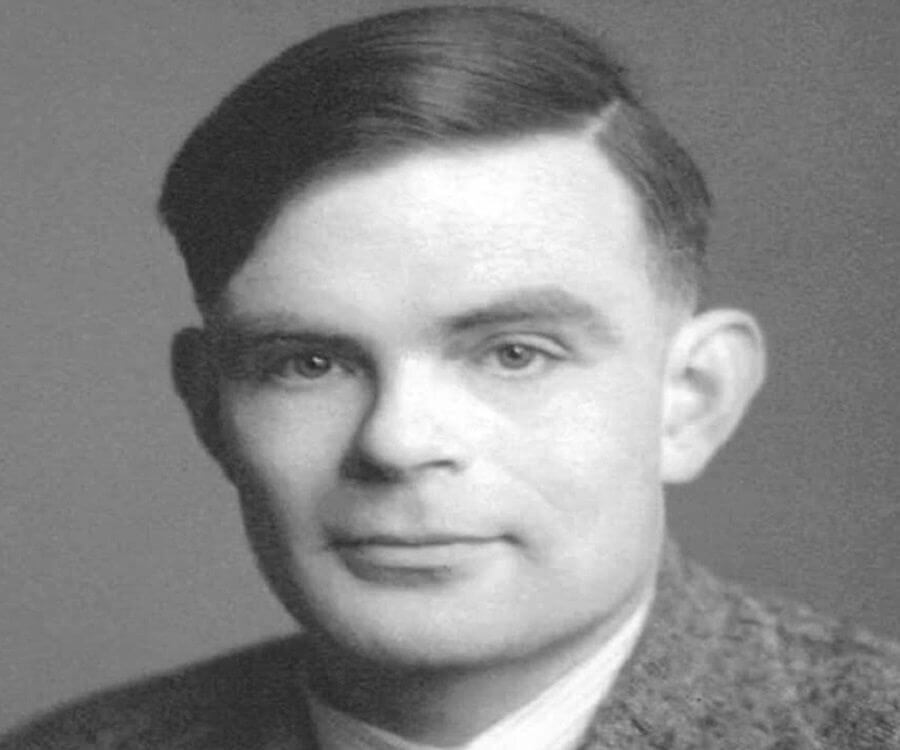
During World War Two many Amateur Radio operators were enlisted as “Voluntary Interceptors” to help with the effort as they often possess the neccessary skills to both operate the equipment and knowledge of radio communications in general.
The skills of all the radio operators including many hundreds of women and men helped gather enough encrypted messages for Turing’s amazing machine to crack the code. Apart from the legacy of cracking the Enigma code, the computer scientist also left us with the concept of Turing Completeness. This is when a computer system is able to recognise or decide other data-manipulation rule sets. Turing completeness is used as a way to express the power of such a data-manipulation rule set. Virtually all programming languages today are Turing-complete.
So there we have it – a somewhat tenuous yet hopefully intriguing link between The Exorcist, Tubular Bells, Scotland, Amateur Radio and the great Alan Turing.
References:
https://en.wikipedia.org/wiki/Tubular_Bells
https://en.wikipedia.org/wiki/Y_service
https://en.wikipedia.org/wiki/Rugby_Radio_Station
https://en.wikipedia.org/wiki/Anthorn_Radio_Station
https://en.wikipedia.org/wiki/The_Manor_Studio
https://en.wikipedia.org/wiki/Kemback
https://en.wikipedia.org/wiki/Turing_completeness
https://www.coventrytelegraph.net/lifestyle/nostalgia/classic-album-hidden-code-3109812
The following YouTube video was the initial inspiration for this blog post (sent to me by Brian – GM8PKL) and has lots of information around using a standard sound card as a VLF reciever. It demonstrates how a device intended for audio can in fact recieve RF.
Thank you for this presentation and sharing it. “VVV” is typically used as a test signal, especially “VVV VVV VVV” Which is what you have just before “GBR”. There may be more on the signal which I could not quite decipher after two “GBR”s. I am wondering if the audio can be furthered filtered to get more of the background noise out. There is something more and it is harder to hear the last 15 seconds or so; there is repetition. A more skilled ham radio operator might be able to make it out better without further filtering. You are right about using the sound card and it has also crossed my mind and others. Be aware that there is also a world below 20 Hz of hearing range, or “infrasound”, used by animals (giraffes) for communication, and much more.
Hello
May I have permission to put a copy of the article on our internal CW radio amateur magazine.
I request permission to be able to translate it into French and insert it and not simply indicate the link (the reference will of course be indicated as well as the invitation for English speakers to see your publications.
Thank you in advance for your help.
73 QRO
Albert F8FPW
I have tried on other album recordings before – some of those listed – but never found RF from GBR.
Mr Young isn’t quite correct reference VVV. Whilst used for test signals as he says, it is also used as a pre-cursor for “Incoming message”
The Russian military still use it every day with three VVV groups, especially the navy:
VVV VVV VVV RCV DE RMCW QSA? QTC
As an example
RCV = Sevastopol
RMCW = Project 862 Yug Class Survey/Research Ship “Donuzlav” of the Black Sea Fleet
Entertaining and informative as usual m8 😎. I’ve got a bunch of those albums, and I suspect the same signal will be lurking in at least some of them (I’ve got most in either cd or high sample rate flac – no point in doing it on mp3s, as the format uses a high order 16KHz filter to try and minimise high frequency distortion introduced by the digitising and encoding process).
That mixer in the photo of the recording studio looks like the big brother to the soundcraft 400b though, and if so is likely where the signal got introduced. That mixer range uses unshielded, unbalanced bus connectors internally, and they effectively run the length of the whole console, as its designed as a modular system (and is prone to being modded badly by users – it also uses a non standard XLR pin assignment 1-hot, 2-cold and 3-ground, and most got modded so they used the standard 1-ground, 2-hot and 3-cold that all other devices use with XLRs).
I’d be wiling to bet some of the other recordings from the studio have picked up the signal (I’ve got at least 2 of the tangerine dream albums, and 24 bit 96KHz flac of both Rush albums – will start there 🧐.